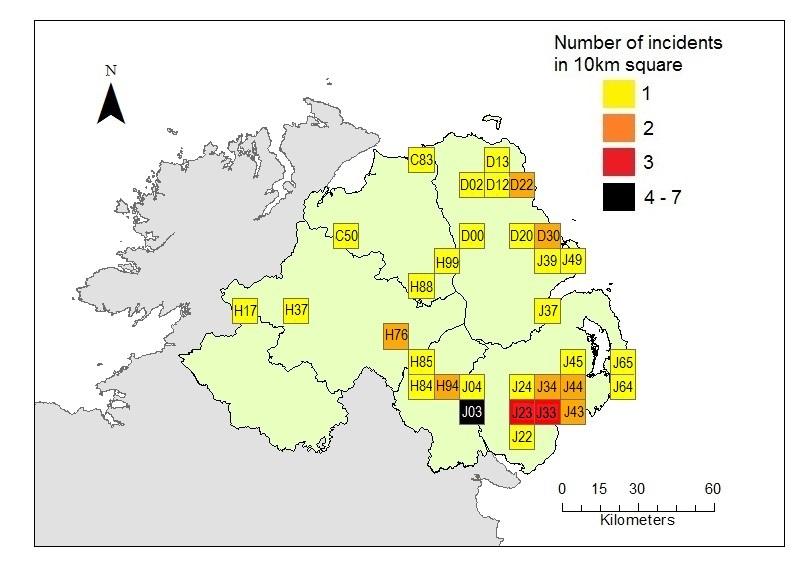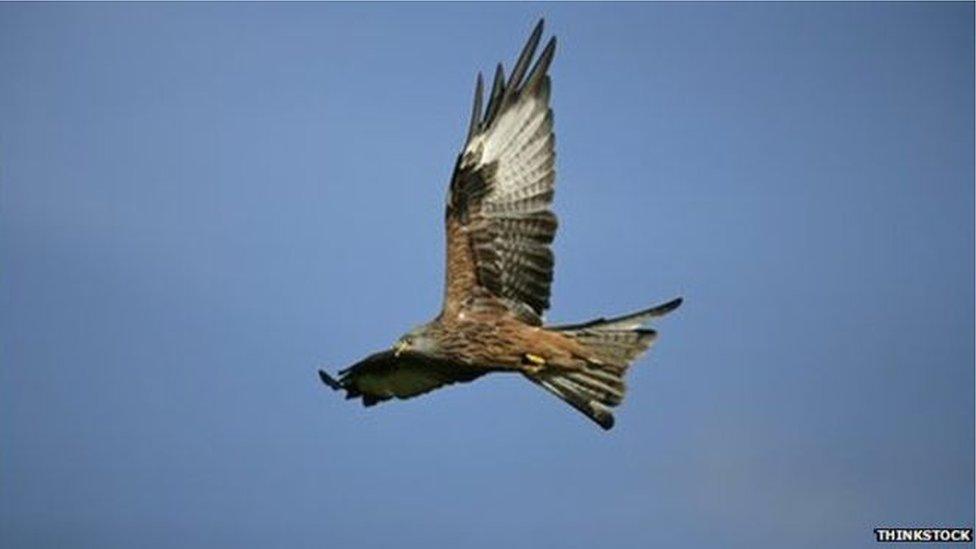Why are birds of prey being killed?
- Published

44 birds of prey were confirmed shot, poisoned or trapped in Northern Ireland between 2009 and 2014
Some 44 birds of prey were illegally killed in Northern Ireland between 2009 and 2014, according to a new report. The birds were shot, poisoned or trapped. But why are these protected species being targeted and what is done about it?
"These figures are only the tip of the iceberg,"said report author Dr Eimear Rooney.
"We can only report on the confirmed numbers of incidents by the PSNI, and sometimes the birds are too decomposed to find out the exact cause of death."
Many incidents remain undetected and unreported, particularly since these are often crimes that occur in remote areas.

Buzzards are the most targeted species, 23 cases have been confirmed since 2009
Red kites, peregrine falcons, sparrowhawks, merlins, golden eagles and white tailed eagles have been targeted.
In 2014 there were a total of 9 illegal persecution incidents, involving 11 individual birds of prey.
In 2014 there were 5 incidents of poisoning, 3 incidents of shooting and 1 incident of trapping.

The report puts the illegal killing of birds of prey in Northern Ireland down to a number of factors.
Ignorance
People may not be aware that birds of prey in Northern Ireland are protected by legislation including the Wildlife (Northern Ireland) Order 1985.
It is against the law to intentionally or recklessly kill, injure or take any wild bird without a licence.
There is a lack of knowledge about these birds, their ecology and the role they play in the ecosystem.
Old countrified practices
Birds of prey are targeted to protect livestock or pets.
"There is a belief that birds of prey are a threat to livestock but buzzards eat carrion, rabbits, rats and medium-size birds" said Dr Rooney.
Use of toxic poisons
Over-the-counter pesticides used to control pests are indiscriminately putting birds of prey at risk.
A number of bird deaths involved the use of a highly toxic pesticide called Carbofuran.
This pesticide has been banned across the EU since 2001.
Red kites and buzzards are particularly susceptible to poisoned baits as they will scavenge on carrion routinely.
"It is possible that there has never been any successful prosecution because of the difficulties of catching people in the act," said Dr Rooney.
"We need more people on the ground to explain that these birds of prey are no threat.
"We are depending on the community to act on this.
Hot spots
The report was drawn up by the Partnership for Action Against Wildlife Crime, which involves agencies including police, the Environment Agency and wildlife groups.

The Hot spots in Northern Ireland identified in the report
While the report does not point the finger at any one group of the community, several "hot spots" areas have been identified.
Of the nine confirmed cases in 2014, four of these occurred in County Down, two in County Tyrone and one in each of counties Londonderry, Armagh and Antrim.
- Published24 November 2016

- Published5 May 2016
